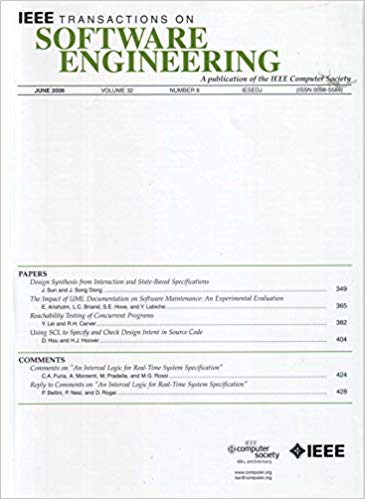Towards Explainable Vulnerability Detection With Large Language Models
IF 5.6
1区 计算机科学
Q1 COMPUTER SCIENCE, SOFTWARE ENGINEERING
引用次数: 0
Abstract
Software vulnerabilities pose significant risks to the security and integrity of software systems. Although prior studies have explored vulnerability detection using deep learning and pre-trained models, these approaches often fail to provide the detailed explanations necessary for developers to understand and remediate vulnerabilities effectively. The advent of large language models (LLMs) has introduced transformative potential due to their advanced generative capabilities and ability to comprehend complex contexts, offering new possibilities for addressing these challenges. In this paper, we propose基于大语言模型的可解释漏洞检测
软件漏洞对软件系统的安全性和完整性构成重大风险。尽管之前的研究已经探索了使用深度学习和预训练模型的漏洞检测,但这些方法通常无法为开发人员有效地理解和修复漏洞提供必要的详细解释。大型语言模型(llm)的出现由于其先进的生成能力和理解复杂环境的能力而带来了变革潜力,为解决这些挑战提供了新的可能性。在本文中,我们提出了LLMVulExp,这是一个自动化框架,旨在专门为llm提供漏洞检测和解释的双重任务。为了解决获取高质量注释数据和注入特定领域知识的挑战,LLMVulExp利用基于提示的技术来注释漏洞解释,并使用带有低秩适应(Low-Rank Adaptation, LoRA)的指令调优对llm进行微调,使LLMVulExp能够检测代码中的漏洞类型,同时生成详细的解释,包括原因、位置和修复建议。此外,我们采用基于思维链(CoT)的关键代码提取策略,使llm专注于分析易受攻击的代码,进一步提高检测精度和解释深度。我们在三个基准数据集上进行了多个漏洞检测设置的实验,证明了我们的方法的有效性。本研究强调了利用llm进行现实世界漏洞检测和解释任务的可行性,为llm在软件安全中的适应和应用提供了重要的见解。
本文章由计算机程序翻译,如有差异,请以英文原文为准。
求助全文
约1分钟内获得全文
求助全文
来源期刊

IEEE Transactions on Software Engineering
工程技术-工程:电子与电气
CiteScore
9.70
自引率
10.80%
发文量
724
审稿时长
6 months
期刊介绍:
IEEE Transactions on Software Engineering seeks contributions comprising well-defined theoretical results and empirical studies with potential impacts on software construction, analysis, or management. The scope of this Transactions extends from fundamental mechanisms to the development of principles and their application in specific environments. Specific topic areas include:
a) Development and maintenance methods and models: Techniques and principles for specifying, designing, and implementing software systems, encompassing notations and process models.
b) Assessment methods: Software tests, validation, reliability models, test and diagnosis procedures, software redundancy, design for error control, and measurements and evaluation of process and product aspects.
c) Software project management: Productivity factors, cost models, schedule and organizational issues, and standards.
d) Tools and environments: Specific tools, integrated tool environments, associated architectures, databases, and parallel and distributed processing issues.
e) System issues: Hardware-software trade-offs.
f) State-of-the-art surveys: Syntheses and comprehensive reviews of the historical development within specific areas of interest.
 求助内容:
求助内容: 应助结果提醒方式:
应助结果提醒方式:


